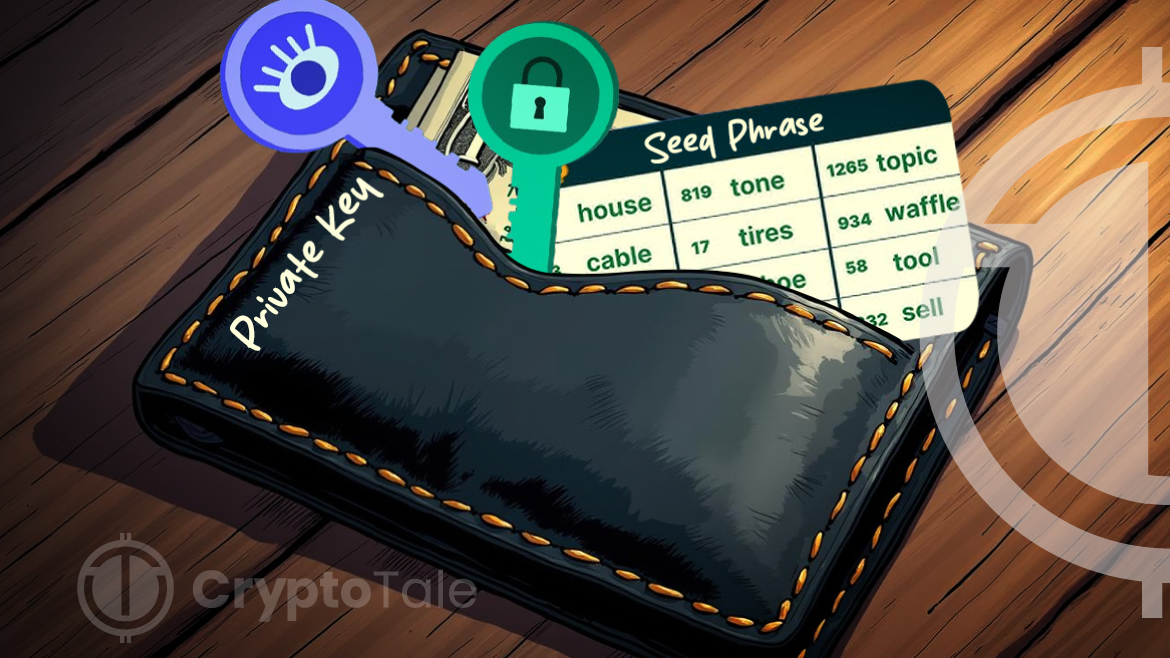A cryptocurrency wallet plays a pivotal role in the cryptocurrency world. It will safeguard all your digital assets. With a crypto wallet, you can protect your keys and information from hackers efficiently. Now, let us delve deep into the crypto wallet’s various types and uses.
What is a Cryptocurrency Wallet?
In simple terms, a cryptocurrency wallet is an interface that allows users to access their assets efficiently. The wallet’s objective is to manage your public and private keys. A crypto user utilizes these keys to access their cryptocurrencies on the blockchain.
The first cryptocurrency wallet was developed by Satoshi Nakamoto, the presumed pseudonymous person who created Bitcoin. The second wallet belonged to Hal Finney, an early Bitcoin contributor. He received the first Bitcoin transaction from Nakamoto, and the craze for cryptocurrency began.
Types of Crypto Wallets
Crypto wallets are broadly divided into hot and cold wallets. Hot wallets are connected to the internet, while cold wallets are considered for offline storage. These two wallets comprise a variety of wallets within themselves. Let us learn in detail.
Hot Wallets
Wallets that require the constant use of the internet are called hot wallets. Electronic gadgets like laptops, mobile phones, and even electronic tablets can be used to access hot wallets. By enabling the private key in this wallet, you can send, receive, and manage your digital assets. Accessing your assets via a hot wallet is easy as it is connected 24/7 to the internet. However, this wallet lacks security and is an easy bait for hackers. Being a software-based wallet, the hot wallets are vulnerable to malware and viruses. Some of the hot wallets are:
Online Wallets
These wallets are also called digital wallets or electronic wallets. Based on software applications, users can access their funds and make electronic transactions. In an online wallet, the user can store the payment details of their credit and debit cards, and even their bank transactions. In this wallet, security can be protected by using encryption and biometric authentication. Users can make payments without using any physical cards. Further, being an online wallet, it is more accessible on mobile devices and computers.
Desktop Wallets
These wallets help users store their data securely on a computer hard drive. This enables users to have more control over their security features. Although the desktop wallets are connected to the internet, they will be less prone to phishing attacks if the internet is offline. However, if the wallet is being used in a public space, there is a chance that others will spy on your details. Also, there is a chance that a desktop or a laptop can be stolen in a public spot. The security features of a desktop wallet are quite advanced compared to those of a mobile wallet. Utilizing a robust encryption feature, storing details offline, and integrating a hardware wallet to protect private keys, the desktop wallet provides high security. However, the desktop wallets have their own limitations. Considering their size, they are not easily portable. This proves to be a challenge for many users.
Mobile Wallets
Just like its name suggests, these wallets are accessible through a user’s phone. By installing the app, the crypto user can access, send, receive, and manage their assets. This wallet not only stores financial information but also other details about your credit cards or banks. Fraudulent activities in this wallet can be reduced because of the layers of security. By enabling a fingerprint lock or facial recognition settings, accessing the details can be limited. Also, mobile wallets do not store information on the phone itself. By utilizing encryption and tokenization, secure transactions can be implemented.
Exchange Wallets
Crypto users get these wallets from cryptocurrency exchanges. When a user buys a crypto from an exchange, a wallet is provided to store the crypto. In this wallet, the private keys are controlled by the exchange. A user can withdraw their funds with the help of the exchange. Users who are active traders mostly prefer exchange wallets. These wallets are also called custodial wallets. Being a hot wallet and linked to the exchange, these wallets are more inclined to cyberattacks.
Cold Wallets
These wallets are in contrast to hot wallets. A cold wallet is mostly a physical device that helps to hold your private keys in an offline manner. By using the cold wallet, cryptocurrency users can prevent theft or hacking of their funds. A cold wallet is considered to be a safe option as it is not connected to the internet. If a user needs to access or move their funds, then they can avail the help of the internet, connect their cold wallet to the internet, and take the necessary actions. By itself, a cold wallet cannot be misused. Unlike hot wallets, the cold wallets are less prone to cyber threats. Here are some examples of cold wallets in crypto:
Hardware Wallets
This wallet stores the private keys of your cryptocurrencies offline. This helps you to have full control over the management of your keys. A hardware wallet functions like a miniature computer. With a small screen and a few buttons, a user can view, access, and manage their digital assets. The wallet allows its users to handle multiple blockchain addresses and execute smart contracts. A hardware wallet uses the internet only when necessary. This helps to curb phishing attacks on the wallet. In the hardware wallet, a transaction can be ‘signed’ within itself through a crypto bridge. A crypto bridge is software that connects the wallet to the blockchain. Signing a transaction implies that a user is accessing their private key. It is done to show that the receiver/sender is acknowledging the transaction and approving the process.
Paper Wallets
It is a piece of paper that has a print of the private keys in the form of a QR code. Users can send or receive cryptocurrency through the code. However, paper wallets have more cons than pros. Being a paper wallet, it is very thin and there are chances of it getting ripped. Also, to transfer funds, a paper wallet needs to be imported into a hot wallet through the Internet. This action nullifies its whole concept. Although paper wallets tend to be cost-effective and a secure way of protecting assets, they are prone to fall into the hands of offenders. If that happens, then the assets of one will be the assets of another.
Sound Wallets
Just as their name suggests, these wallets store the private keys as audio files. The keys can be saved on a CD, flash drive, or even a vinyl record. Even though sound wallets are stronger than paper wallets, they are prone to physical damage. If you by accident scratch the CD storing your private keys, then you won’t be able to access your keys again. Further, sound wallets are more expensive than paper wallets. To decode the keys in sound wallets, you might require special tools. One such tool is the spectroscope application. This tool helps to unravel the hidden codes in sound files that contain the encrypted private keys.
Software Wallets
Although this is typically considered a hot wallet, it can also function as a cold wallet. If the software wallet is installed on a device that is kept offline, then it would function as a cold wallet. The wallet can be used as a cold storage setup, wherein it is used only for signing transactions. Also, some software wallets allow users to operate in cold storage mode to enhance security.
Crypto Wallet Classification on Functions
Based on their functionality, cryptocurrency wallets are divided into custodial, non-custodial, and multi-signature wallets.
Custodial Wallets
This wallet is like a custodian. It keeps custody of the user’s private keys and has full control over their funds. In this wallet, the user just needs to be permitted to send or receive payments. By using this wallet, the user can get free transactions or even backup facilities. However, since the custodian has full control, the user has limited access to their funds. They also need to verify their identity through the Know Your Customer (KYC) process to avoid scammers. Notably, the custodial wallet is vulnerable to cyberattacks.
Non-custodial Wallets
Also called a self-custody wallet, the non-custodial wallets provide users with full authority over their funds and private keys. Users are given the liberty to safeguard their private keys. However, if the keys in a non-custodial wallet are stolen or hacked, then the user loses their access and control over their funds. Compared to a custodial wallet, the non-custodial wallet is less friendly and is more suited for experienced users.
Multi-signature Wallets
A wallet that requires more than one key for signing a transaction is called a multi-signature wallet. By using this wallet, a user can provide an extra layer of security for their funds. Even if one key is hacked, the funds cannot be moved by the hacker, because the transfer requires the signatures of the other keys. This kind of wallet is beneficial to high-security organizations, wherein the decision is taken jointly by a group of people, rather than by a single member. This joint decision will promote transparency and shared control of the funds. Also, if a key is lost, the funds can be recovered with the help of the remaining keys.
Uses of a Cryptocurrency Wallet
- Security: To protect the private keys of a crypto user, a crypto wallet is used. Depending on their preference, the keys can be kept either in a hot or a cold wallet.
- Transactions: the wallets are used for sending and receiving digital assets. Most of the e-commerce markets now use crypto wallets as a form of transaction. It is considered to be safe and low-risk, especially for international payments.
- Gaming: Gaming assets can be handled through wallets. This makes peer-to-peer trading and ownership easy. Additionally, it helps users to monitor their achievements and earn rewards.
- DeFi Platforms: In a decentralized finance platform, users can lend, borrow, or trade tokens stored in their wallets. This will help to maintain verifiable credentials.
- Supply Chain Management: By using cryptocurrency wallets, businesses can enhance their transparency in supply chain management systems. This allows customers to track and confirm the authenticity of products easily. By keeping a record of the owner on the blockchain, legitimacy can be verified. Further, this step smooths safe and cost-effective cross-border payments.
- Real Estate Tokenization: Using crypto wallets to tokenize stock, real estate, or even NFT will give investors partial ownership and liquidity. By using the crypto wallet in real estate, land titles can be saved easily. It also helps to track ownership records efficiently. Additionally, with this wallet, handling escrow funds will be easier.
How does a Cryptocurrency Wallet Work?
A crypto user, after purchasing digital assets, receives a cryptocurrency wallet. Mostly, the wallet is a hot wallet. Based on security concerns, the user can move the assets to a cold wallet or retain them in the hot wallet. As discussed above, the wallet has a public and a private key. When a user is sending crypto, they need to enter the receiver’s public address and the amount. Then, they have to sign the transaction with their private key. Finally, they must add the transaction (gas) fee and send it to the other party. A similar process is undertaken while receiving the cryptocurrency. The other party will add the receiver’s address and the payment will be received. The sending and receiving of transactions will be confirmed on the blockchain, a decentralized ledger.
When Does a User Get Their Wallet?
A crypto user gets their cryptocurrency wallet under various situations. Some of them are:
Creation of a new wallet
In this scenario, the user creates a new wallet, which gives him full control of their private keys. By downloading a software wallet or purchasing a hardware wallet, a user can create a new wallet. When the process is underway, the user receives their private and public keys. Also, a recovery seed phrase is given to the user to back up their private key. This type of setup is quite risky because if the user loses their private key and their recovery phrase, then their access to their funds will be lost.
Custodial Service
In this situation, the user creates a wallet on a third-party exchange. The platform handles the private keys on behalf of the user. Users who trade frequently use this wallet.
Participating in a DApps Platform
Some decentralized applications (DApps) offer crypto users a wallet when they sign up for their process. This is evident if the user has participated in a blockchain-based game(s).
Receiving Crypto
The most efficient step a user can take to get their crypto wallet is by receiving cryptocurrency. When someone sends you cryptocurrency, you can get a wallet automatically, but the process needs to be set up. This will be easy for people who are starting out in the crypto trade.
Conclusion
Cryptocurrency wallets play a pivotal role for a crypto user. Each wallet has its uses and functionalities. Depending on one’s preference, they can keep their digital assets. The wallet caters not only to experienced members but also to new members. Exploring the nuances of a crypto wallet will help you keep your digital assets safer. Protecting your private keys is essential, as the bond between you and your assets depends on the keys. If you lose the keys, then you lose all access. Notably, a crypto wallet is not just limited to investors or traders; it is vital for anyone engaged in the crypto economy.






